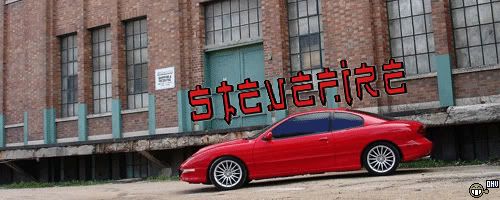There are performance replacement lifters for the SBC w/ OEM roller. These lifters
come in hydraulic and solid flavor. They do not use link bars, but use a solid
"Double D" plate like the 2.2L. The largest obvious difference is the height
of the lifter. Buick 90 degree V6 engines also use .842" dia lifters. And there are
some performance lifters for these engines also. Again, they use the "Double D"
retainer when the engine uses OEM rollers. These lifters may or may not by different
than the Chevy lifter.
3 things need to be addressed to use the Chevy lifter in the OHV:
1) Lifter body height + maximum cam lift must not place the top of the lifter where part
of the block should be. The block could be ground away slightly if needed.
2) The oil feed hole in the side of the lifter and the groove around it must not extend
past the block at any time, either at full lift or at zero lift. If this happens a large leak would exist in the pressurized oil feed system.
3) The "Double D" retainer needs to have enough clearance to be fastened in the block.
At the minimum spacers would need to be installed beneath the retainer due to the
increased height of the SBC lifter.
For the guy doing machine work, lifter sleeves are available which could be used to
modify the block fo different lifters. But they're not an option for someone looking to
"plug n play" some lifters.
My advice, again, is to look into disassembling the OEM lifters and replacing the
checkvalve spring with a stiffer one, possibly from an inexpensive aftermarket
performance lifter. This is basically what GM did for the LT1 and LT4 engine. I use a
set of the V8 GM lifters to run to 6500-6800 "all day long" in a 350 ci roundy-round car
engine. I know of street cars with modified LT1's which are being run to 7k during
dragstrip passes. Our lifters and valvetrains are lighter, which only increases the rpm
potential of these lifters. A set of 16 of can be obtained from GM for about $200 as part
number 12371042. Split it with some friends, it's cheap. A little research and a few
phone calls leads me to believe GM is using the same lifter in all of the LS series
engines.
Icing on the cake: Pictures of changing the spring.

Here are the SBC and OHV lifters side by side. Notice the dark area in the center of the
lifter? This is where oil is allowed to feed the lifter. If this extends past the top of the block on full lift, it's possible that the pressurized oil in the lifter and cam feed galleys will suddenly be allowed to leak out the lifter bore. That's bad juju! Looks like it's real easy to do with the SBC lifter installed.

Here are 2 lifters taken apart, OHV on left and SBC on right. And the entire tool set
I used for the job.

Hmmm... any guesses which spring is the "performance" spring? The larger wire
diameter is the real clue.

OHV lifter reassembled with LT1 spring. LT1 lifter parts and OHV spring on right.
Here's another item of interest.

Look at the wear marks left by the OEM guide on the OHV lifter. The clean area indicates the current lifter travel.
You can clearly see there's not a bunch of travel available for additional lift. I don't have measuring tools here, but I'd guess the difference is around 1/8". It may be a good idea to add a shim under the lifter guides when increasing lift.
And a very important, often neglected step in the O'haul:

This is a tiny, tiny amount of the junk which came out of the OHV lifter I used. This lifter came from an engine that failed. The torque converter was installed wrong, which
pushed the crank against the thrust bearing. As the crank and bearing wore out, metal
was washed through the entire engine with lubricating oil. This caused the cam
bearings to fail, rod brgs, and main brgs to fail. All of the lifters have wear on the
outside of the bores. They're junk. Eventually the crank moved so far forward that the
timing chain wore a groove into the cover and the crank wore through the thrust bearing
into the block and main cap. And the shop that installed the trans kept telling the car
owner "it will be ok, just drive it." The point here is to disassemble and clean the lifters if they're going to be reused. Even a good, high mileage engine will accumulate some deposits inside the lifter.
I've got my lifters. Anybody wanna start selling "performance lifters" lke JBP?
-->Slow





















 Look at the wear marks left by the OEM guide on the OHV lifter. The clean area indicates the current lifter travel.
Look at the wear marks left by the OEM guide on the OHV lifter. The clean area indicates the current lifter travel. 


I'm not sure of anybody actually running them...much less someone with an engine that the stockers couldn't handle.


